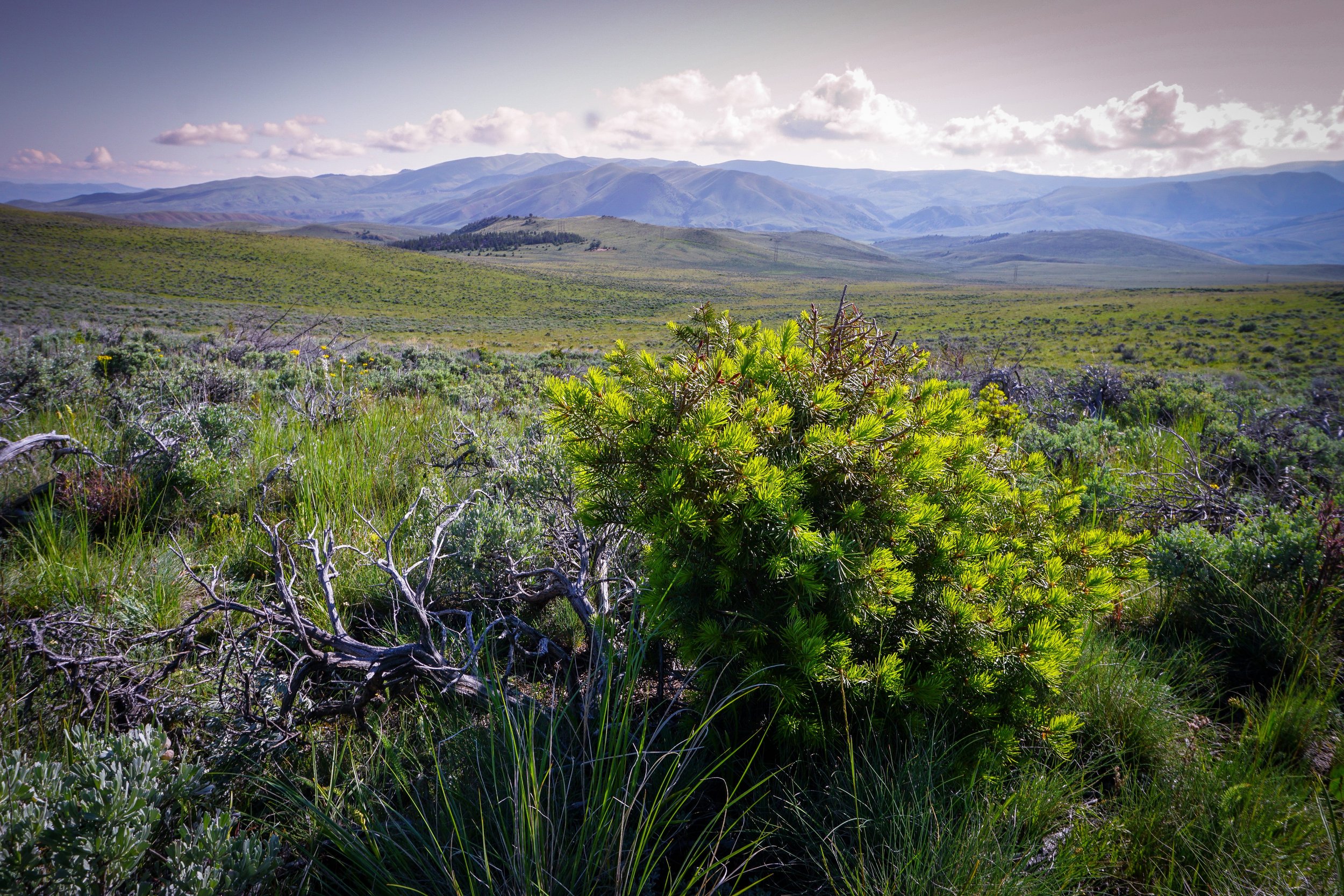RESEARCH: Sagebrush Songbirds Benefit from Conifer Removal
A new paper, “Impacts of umbrella species management on non-target species,” investigates the effects that conifer management for Greater Sage-grouse habitat improvement had on other sagebrush-obligate bird species in southwest Montana.
Researchers took field videos of Brewer’s Sparrows, Green-tailed Towhees, Sage Thrashers, and Vesper Sparrow nests as part of this study on the effects of sagebrush habitat improvement on non-target species. Watch the videos and learn more about this research here. Please be aware that videos show instances of nest predation.
The team, led by researcher Elise Zarri and supported by Working Lands for Wildlife and the Bureau of Land Management, found that birds whose habitat needs aligned closely with Greater Sage-grouse—Sage Thrashers, Vesper Sparrows, and Brewer’s Sparrows—successfully raised more offspring in areas where encroaching conifers had been removed. The data demonstrated that even though sagebrush habitat management was undertaken on behalf of one particular species of conservation concern, other species in the area benefited—indicating that Greater Sage-grouse may serve as an “umbrella” species for conservation of other organisms within its ecosystem.
Learn more about this research and its implications at Working Lands for Wildlife.
This research was supported by the Bureau of Land Management, Working Lands for Wildlife, and the U.S Fish and Wildlife Service, with additional support from the Southwest Montana Sagebrush Partnership.
Want to learn more about the Southwest Montana Sagebrush Partnership and their efforts to combat conifer encroachment in southwest Montana’s Medicine Lodge region?


